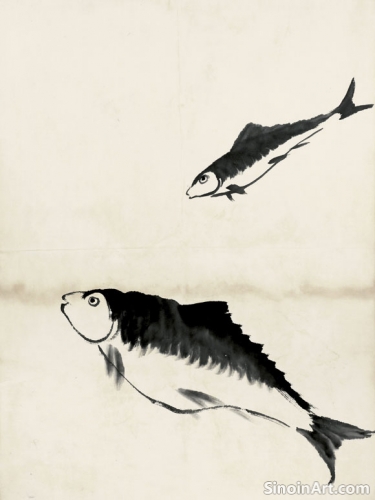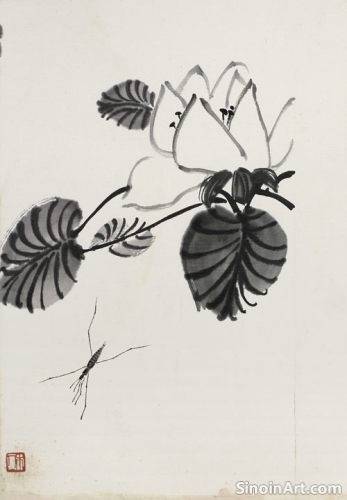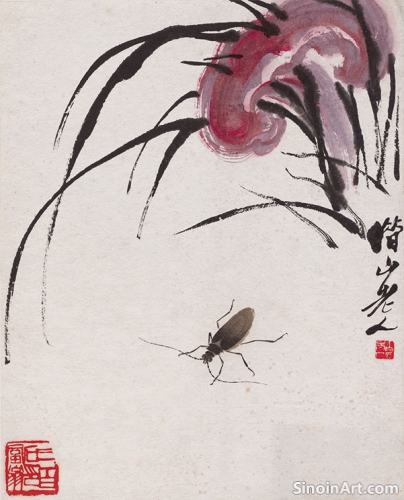The Use of "Reversed Brush" in Xieyi
|
The "Reversed Brush," or nìfēng (逆鋒), is a technique in Xieyi brushwork that involves starting a stroke by moving the brush in the opposite direction from the intended line of travel, then changing direction to create a strong, textured, and dynamic line. It is a deliberate and subtle application of force that adds expressive depth to the line. This technique results in strokes that are both powerful and subtly textured.  The nìfēng technique adds a sense of force, resistance, and inner strength to the lines, making them especially effective for depicting sharp angles, jagged rocks, and other elements that require a feeling of tension and power. It can give the impression of controlled energy. This technique conveys a sense of restrained power and energy.  This technique also creates lines that have a rougher, more textured quality, adding visual interest and a sense of immediacy to the artwork. It provides an alternative to smooth strokes, offering a dynamic contrast. This contrast adds to the overall expressiveness of the art form.  The application of the nìfēng requires precise control and a deep understanding of the brush’s responsiveness. It requires both technical skill and artistic intention. This seemingly simple technique requires a high level of skill and a subtle understanding of the interplay of ink and paper. Mastering the "Reversed Brush" technique allows the artist to expand their expressive range and to create lines that are both powerful and nuanced, adding depth and vitality to their Xieyi paintings. It is a technique that rewards diligent practice and refined skill. The subtle variations in each stroke create more dynamic and interesting works of art. |
Tag : Reverse brush, Nifeng, textured lines, Xieyi stroke, expressive art
Related information
- Key Techniques in Xieyi Brushwork
- The Concept of "Zhong Feng" in Xieyi Brushwork
- Xieyi Painting as a Means of Meditation
- Xieyi Painting and the Depiction of Trees
- Xieyi Painting and the Use of "Boneless Technique" ( Mògǔ)
Key techniques in Xieyi painting include line drawing, splashing ink (Pomo), dry brush work, the control of ink washes, and the strategic use of negative space, each contributing to the expressive power of the artwork.
"Zhong Feng" (central tip) is a core Xieyi technique involving holding the brush perpendicular to the paper to create strong, balanced lines with even width, conveying inner strength and control, serving as a foundation for advanced brushwork, and requiring a mastery of precision and consistent brush handling.
The practice of Xieyi painting serves as a form of meditation, fostering mindfulness, focus, and a sense of connection with the inner self, nature, and the creative process, allowing artists to express inner feelings, explore personal growth, and find a sense of peace and balance.
Trees are a powerful subject in Xieyi painting, depicted through expressive brushwork and washes to capture their unique forms, textures, and symbolic representations of longevity, growth, resilience, and the connection between the human and natural realms, conveying both beauty and a profound appreciation for the cycles of life.
The "Boneless Technique" (mògǔ) in Xieyi relies on the absence of outlines, instead using washes of ink and color to create form and texture, resulting in fluid, organic works that require skill in blending and layering, as well as spatial awareness.